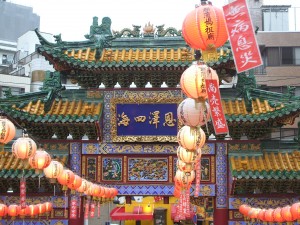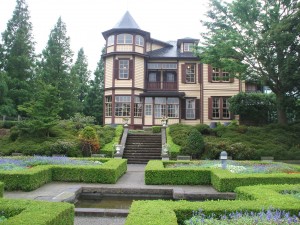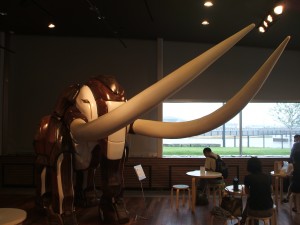Continuation of A Canadian in Japan: My First Time in Tokyo Day 1 and My First Time in Tokyo Day 2

I needed to get a new Canadian passport, so I decided to make the trip to Tokyo and get it done in person. I had never been to Tokyo and so I was quite excited. I live in Ohtsu, which is a medium size city in Shiga prefecture, which is a fairly quiet, rural area. I grew up on a mall island off a small city in Canada, and big cities really arent my cup of tea. Regardless, I was determined to enjoy my time in Tokyo. I took 3 days off from work at my school (SSE Ohtsu), booked the night bus (return trip was about Y12,000), and was on my way.
Day 3: 20 minutes south-west of JR Shinagawa is Yokohama City. Day 3 in Tokyo was spent in this charming, booming city. I found Yokohama to be both modern and rich in heritage. I met an old friend from Canada and he took me to the harbour area, in front of JR Sakuragicho. From JR Sakuragicho, there is a beautiful harbour side walkway, recently refurbished for the City of Yokohama’s 150 year anniversary. The first section, a wooden boardwalk with original freight tracks running along it, takes you past the famous Nippon Maru training vessel, the old warehouses (now converted into very chic shopping and restaurants), and the current shipping port. Further along the waterfront are cafes, parks, public buildings and museums.

About 25 minutes walk from JR Sakuragicho is Yokohama China town. In comparison with Japan’s other 2 famous China towns, in Kobe and Nagasaki, Yokohama Chinatown is bigger and more traditional. I was impressed with the original Chinese temples and shrines, huge entrance gates and generally authentic feel. My friend took me to a great restaurant serving spicy Chinese noodles, made fresh in front of your eyes. Sitting at the bar, you can watch the chef slicing the noodles straight into a huge wok of boiling water to cook. As I wandered through Yokohama China town I was amazed to meet so many shopkeepers who spoke little or no Japanese. Many of them only spoke Chinese and had to ask younger staff or refer to English menus for help. I truly felt like I was in China.
Yokohama is a port town, with mountains running along the south and west sides. Along the ridges of these mountains, with a fantastic view of the city and harbour below, is the old foreign settlement. From Chinatown, a fifteen minute walk takes you to a 150 year old Italian diplomat’s home, restored as a cultural asset and open to the public. 10 minutes from these is a 200 year old Spanish villa and several churches, as well as European style houses and the largest foreign cemetery in Japan, resting place of literally thousands of foreigners, including graves for the unknown of both great wars and the Great Kanto earthquake of 1923. A beautiful walk, gorgeous old houses, a definitely European feel and a great view.
Just below the foreign settlement is Motomachi, a shopping street which I can only describe as “quaint”. A winding one-way street with very little traffic, the shops were all small and unique. Artisans shops, boutiques, import food markets, Chinese herbal medicines, cafes and so on made this quaint district a pleasure to leisurely stroll through.
As I walked back towards Sakuragicho Station, I passed Yokohama Stadium, home fo the Yokohama Baystars baseball team. Although it had started to rain and was still 2 hours before game time, a large crowd had already gathered, waiting for the doors to open.

In the evening, I went to Motion Blue, a jazz club on the waterfront recommended by a friend. And a great recommendation it was! Cool and clean, with great atmosphere and a layout which gave everyone a clear view of the stage, i thoroughly enjoyed listened to a guitar/ vocal duet singing jazz standards. Highly recommended for a romantic evening!
As I made my way to catch the night bus back to Kyoto, I promised myself I would come back to Yokohama with my wife, as I felt it was a truly magical and romantic city.
Edward, SSE Ohtsu
Leave a Reply